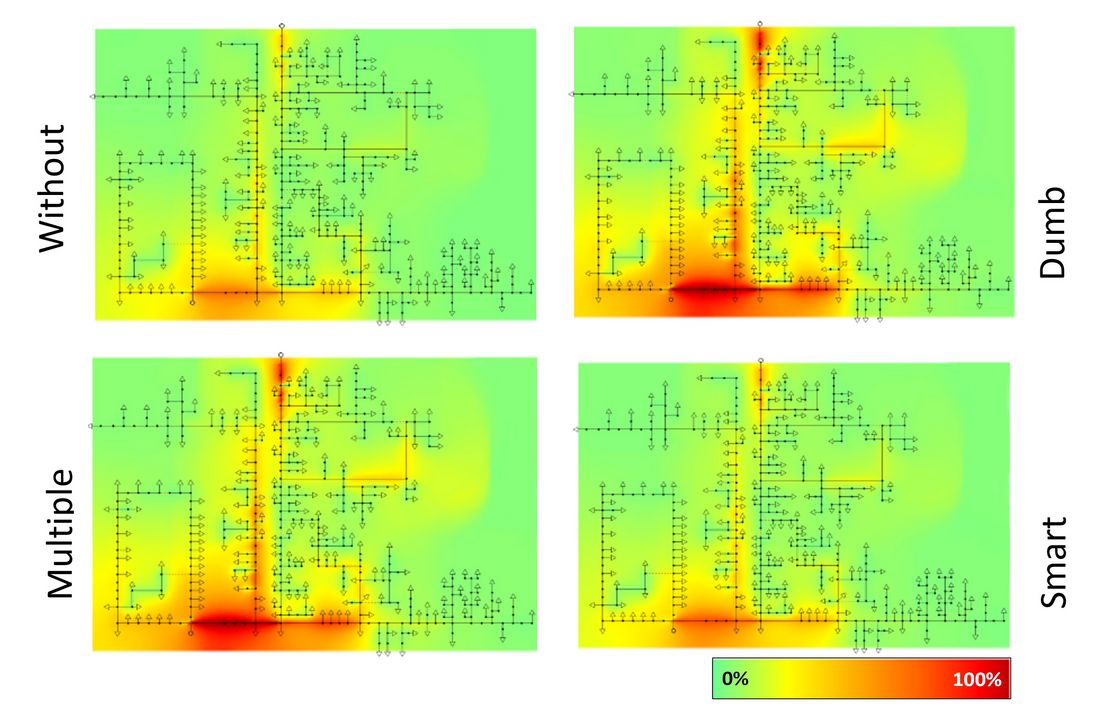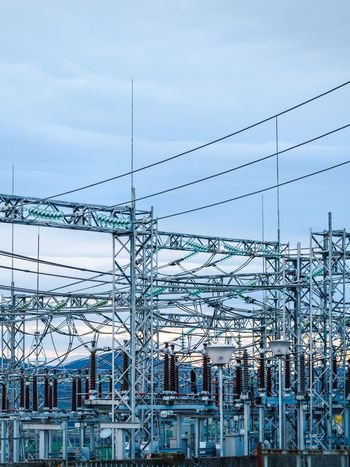Impacts from electric mobility in V2G and V4G modes in the distribution network planning and operation
Part of the effort in decarbonizing economy and society relies on mobility, involving the electrification of the transportation sector and leading to the so-called electric mobility phenomenon. The increase in electric mobility requires a considerable effort in the operation of electrical distribution networks to allow charging batteries of the electric vehicles (EV). As matter of fact, electric vehicles became a new electricity consumer presenting a special characteristic – flexibility. This new consumer can charge the batteries slowly, in periods ranging typically from four to six hours, or, in a fast manner, in periods between 15 and 30 minutes involving powers from the 50 kW to 350 kW for the case of the fast and ultra-fast chargers, respectively. The presence of this new type of consumer in the electrical grid is changing the patterns of load consumption, causing in some situations overloads in branches (like for dumb charging), excessive voltage drops and, in some cases, compromises power quality. In face of these concerns, the power systems community has timely identified and developed several solutions for charging the EV batteries taking profit of the flexibility of this new load type. The most common approach is the controlled charging of the EV batteries – the smart charging – involving the management of the chargers of the batteries in charging places of parking lots, garages of buildings and even in individual electrical installations, like households, managing the charging of the batteries together with the remaining loads of the electrical installations.


FIEEE, Full Professor of EE at Faculty of Engineering of Porto University (FEUP), Associate Director at INESC TEC – Porto – Portugal, Convenor WG C6.40
Distribution system operators (DSO) are realizing that they need to monitor their grids closely to evaluate the need to reinforce the network in some areas, namely for those situations where they do not have control over the simultaneous charging of the EV batteries, like in residential areas around large cities. In fact, the regularity of the commuting patterns leads to situations where most EVs can start charging more or less at the same time, after the end of the last journey of the day. Even if a controlled battery charging is adopted at the building level, it might be challenging to keep individual branch power flows within technical limits. The existence of several residential buildings supplied by the same feeder will most likely provoke an overload in the upstream branches for those conditions, where simultaneity factors are no longer valid. In these cases, either a reinforcement of the LV distribution grid is adopted, or the management of the charging is supervised and controlled at grid level from the secondary substation, involving the deployment of a communication and management infrastructure. The same may be necessary for MV grids when they feed several fast and ultra-fast charging systems together with local slow controlled charging solutions in the same geographical area.
Up to now, the reversibility of EV power converters to be used according to the availability of the battery stored energy and willingness of EV owners – the so-called V2G mode, has little adherence from electric vehicle manufacturers. With the development of standards, like CHAdeMO, the V2G mode will become soon a widespread reality. However, only Nissan and Tesla are providing commercial EV charging systems with the capability to operate under the V2G mode. In addition, the already existing collective charging management solutions only exploit the controlled charging without functionalities of V2G mode. Apart from the injection of active power into the grid, it is possible to conceive that EV power converters can deliver reactive power, providing support for voltage control in some distribution grids, namely when the ratio between branch reactances and resistances is large enough. The EV power converters can also offer the capability to operate as active filters, helping in mitigating harmonic distortion in distribution grids due to increased presence of electronic power converters associated to different electrical devices connected to these grids. In these cases, the EV converters are said to operate in the V4G mode. Moreover, one can assume that battery charging converters can operate in both V2G and V4G modes. This provides a tremendous increase in controllability for distribution grid management.
In face of the electric mobility increase, foreseen in the coming years, together with the explosion of the distributed generation (microgeneration for LV grids) connected directly to distribution networks, it is time for DSOs, and naturally for Regulators, to value the ancillary services of peak shaving, voltage control and harmonic filtering that EV converters can provide in V2G and V4G modes. By exploiting these features, it is possible to develop and deploy optimization-based methods for control and active management of distribution grids facing large-scale integration of distributed generation and electric mobility. In fact, the V2G mode of operation in LV grids can be used to reduce line currents, by delivering locally power support in some grid areas. It can also create charging slots to be used during sunny periods for EVs parked near critical nodes, by avoiding overvoltages caused by solar PV power injections.
Apart from the above-mentioned services, EVs can deliver frequency support services by participating in primary and secondary frequency control in islanded systems. This will allow integrating larger volumes of renewable power sources, like PV and wind, while keeping frequency variations within narrow bands. This is exploited in pilots, like in the Bornohlm island in Denmark, the São Miguel island in the Azores / Portugal and in Japan by Toyota Tsusho and Chubu Electric Power.
The future implementation of ancillary services by EVs may require interfacing agents, like aggregators, that will communicate the control commands issued by the DSO to the EVs connected to the grid and will deal with the commercial management aspects.
It is therefore important to launch pilots that will exploit the above mentioned functionalities, in order to evaluate the technical and economic benefits and define regulatory schemes that will promote the development of such control and management solutions. The technical management that involves these features needs to be integrated within smart grid approaches, already being deployed, that exploit advanced sensing solutions in conjunction with the information obtained from the advanced metering infrastructure delivered by smart meters. These solutions should be activated at the level of an ADMS (Advanced Distribution Management System) for functionalities related with voltage control, power flow control and three-phase balancing.
The development and adoption of the V2G and V4G functionalities requires now standardization to allow an adherence of more and more electric vehicle manufacturers to these features. We can then say that we are presently at the dawn of a real change of paradigm in the operation of distribution grids by exploiting actively the capability of injection of active and reactive powers from EV batteries. This will improve the efficiency in the operation of the grids, will allow postponing reinforcements and will improve quality of service, while electrifying more and more the economy and reducing CO2 emissions by allowing more renewable generation penetration in the distribution networks.

Impacts from different EV charging strategies in branch loads of a MV distribution grid. The impacts are shown “without” EV charging, when “Dumb” charging is applied, meaning EVs charging simultaneously at the time of return, when “Multiple”-zone tariffs are applied and with the application of “Smart” charging techniques
Illustration credit: Banner & thumbnail by nrqemi on iStock



